Steps To Writing A Children's Book
So, you want to know how to write a children's book? You've got the right idea in mind — children and teenagers are some of the most devoted readers out there! But you should know that writing great children's literature is no easy feat, especially if you're brand-new to the game.
Luckily, we're here to give you aspiring authors a boost. This post contains everything you need to know about writing a children's book — complete with advice from top children's book editors in the industry. Read on to learn how to write a children's book today... and potentially even become the next Roald Dahl or Beatrix Potter.
1.Find an idea that's relatable to children
Though there's no secret recipe for commercial success, one thing that's true of children's books is that the most successful ones will please two audiences: the children, and the parents of that children. However, while adults may be the ones buying the books, kids are the ones who will actually be approving them (and treasuring them as they grow up). So children are the ones who you want to keep in mind as you write — they're the ones who will make this book worth writing. And to write a book for them, you'll need to come up with a great idea.
Uncover a universal theme
Now, children's book ideas might seem fantastical, elaborate, and original when you come across them at first. But when you strip the funny and creative dressings of a children's book down to its bare essentials, you'll see that the themes present in a children's book are entirely universal:
- Trying green egg and ham | The value of having an open mind
- Refusing to fight other bulls | The importance of kindness
- A pig who's saved by a spider | The power of friendship
The best children's books are grounded upon ideas that inspire and connect with children. As children's editor Anna Bowles warns: "A lot of beginners write about children as we adults often see them: as cute and slightly comical little beings. But what children actually want is stories where they are the heroes, driving the action, facing challenges, and making choices."
Is your idea right for kids?
To ensure that your idea is solid, go through this checklist:
- Why do I want to tell this story?
- What is my story about?
- Is this idea and theme going to be relatable to children?
- Is it unique and possibly marketable?
If you're struggling to come up with a book idea, it never hurts to recall what you liked to read at their age. You also have the best critics around: kids! Bounce ideas off children you know to see what they like. Above all, don't be afraid to switch things up. You might think your plot is set in stone, but remain open-minded to suggestions and different creative avenues.
2. Choose an age group (and know its market)
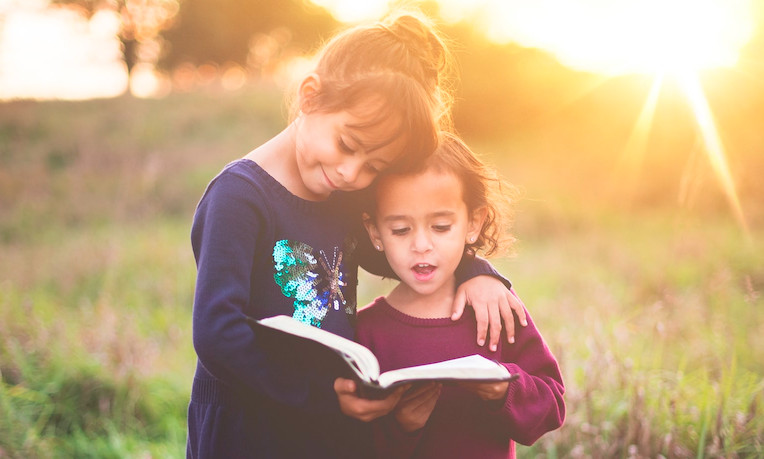
Before you write a single word of your children's book, you also need to determine your target audience. Children's lit ranges from baby board books alllll the way up to young adult novels, so your target age range may be anywhere from 0 to 18. It's important to know what your target audience's age range is so that you can speak directly to them. However, age isn't the only factor here! You also need to think about what your readers will expect in terms of topic, lengthy, style, and complexity.
Understanding these things enables you to "write to market," so your book will actually sell. Let's take a quick look at the main types of children's books and their target age groups. We'll also provide some well-known examples, in case you're not quite sure what these books should look like.
*Note that the age ranges below are meant to give you an idea of the general guidelines in the industry, NOT concrete restrictions. Most children (and adults) enjoy picture books beyond the age of 6, and many precocious children love YA novels. This is just to give you an idea of your primary demographic.
👶 Picture Books (ages 0-6)
In industry terms, a picture book is a book that relies on both illustrations and words to tell the story. Since picture books are meant for very early reading experiences, the word count is going to be quite low (500 words or fewer); board books for babies and toddlers are even shorter. But all picture books still need to have a strong story, so don't make the mistake of thinking they're easy to write. You can learn more in our guide to writing a picture book.
Examples of classic picture books:
- The Very Hungry Caterpillar by Eric Carle
- Where the Wild Things Are by Maurice Sendak
- Green Eggs and Ham by Dr. Seuss
- The Gruffaloby Julia Donaldson
👧🏼 Early Readers (ages 6-7)
After picture books comes early reader fiction: books for children who have graduated to more-words-than-pictures, but aren't yet ready to tackle long blocks of text. The "early reader" word count ranges from 2,000 words to 5,000 words, though you'll still get your fair share of illustrations. These early readers also usually come in series, so kids can devour one after another to build their reading skills.
Examples of early readers:
- Elephant & Piggie by Mo Willems
- The Animal Ark by Lucy Daniels
- Amelia Bedeliaby Peggy Parish
- Horrid Henry by Francesca Simon
🧒🏻 Chapter Books (ages 7-9)
From early readers, children progress tochapter books,which we all probably remember from our earliest book reports! Chapters books are also pretty quick reads that tend to come in series, but their word count is slightly higher, around 5,000 to 10,000 words per book. You'll still see pictures in chapter books, but you'll notice they're less common and often appear as sketches rather than full color illustrations.
Examples of chapter books:
- Junie B. Jones by Barbara Park
- The Magic Treehouse by Mary Pope Osbourne
- The Boxcar Children by Gertrude Chandler Warner
- Diary of a Wimpy Kid by Jeff Kinney
👦🏽 Middle Grade (ages 9-12)
Middle grade books are for kids who want something a little more advanced in terms of both prose and story. These fully independent middle-grade readers tackle books from 30,000 to 50,000 words, with even fewer illustrations than their predecessors — though there may still be some pictures, especially to accompany chapter headings.
Examples of middle grade fiction:
- Charlie and the Chocolate Factoryby Roald Dahl
- Harry Potter and the Sorcerer's Stoneby J.K. Rowling
- Angus, Thongs, and Full-Frontal Snogging by Louise Rennison
- Percy Jackson and the Olympians by Rick Riordan
👩 Young Adult (ages 12-18)
Finally, juvenile readers reach young adult books: the last stepping-stone between children's and adult literature. The typical word count in YA falls between 50,000 to 100,000 words — in other words, the same length as any other novel. However, the subject matter will be distinctly adolescent: often to do with navigating life-changing issues and discovering one's true self.
Examples of young adult books:
- The Fault in Our Stars by John Green
- The Hunger Games by Suzanne Collins
- Divergent by Veronica Roth
- The Hate U Give by Angie Thomas
Free Course: How to Write a YA Book That Sells
Learn how to write a commercially viable Young Adult novel with this free 10-day course. Get started now.
3. Use a voice that doesn't talk down to readers
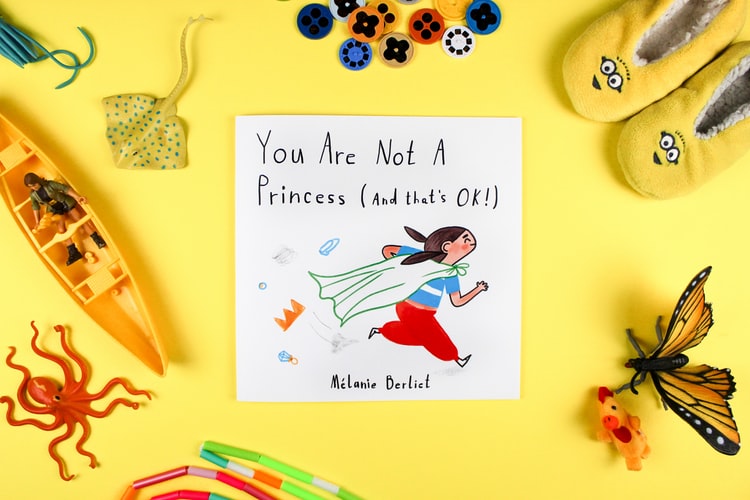
A distinctive voice will set you apart from other children's books from the onset. Your authorial voice is what is going to speak to children (and we also mean that in the literal sense, as children's books are often read out loud.)
You might be afraid that you won't be able to find your voice instantly, but don't worry! The good news is that, just as nobody has a voice like Dr. Seuss' or Roald Dahl's, nobody has your voice. And, like all other writing endeavors, it's a matter of practice and patient dedication. To discover it, dig deep to figure out what makes your words special — and where your strengths on the page lie. Here are a few things to keep in mind as you hone it.
🖊️
Which famous children's author do you write like?
Find out which literary luminary is your stylistic soulmate. Takes 30 seconds!
Use age-appropriate vocab
There are many great places to show off your grandiose knowledge of language, but a children's book is not one of them! Children won't be impressed by four-syllable words — they'll only be confused by them. It's necessary to remember that your target audience's vocabulary is different from yours, even if you're writing middle-grade fiction or YA.
That said, you should never talk down to children. As children's editor Jenny Bowman says, "Children are smarter than you think, and context can be a beautiful teacher."
The best way to navigate this delicate balance is to read other books for kids in your age group. This is by far the best way to get a sense of what language is suitable for them,.
Harness the power of repetition
Picture books and early readers depend on the repetition of words and phrases, so children can follow them easily. Think about books likeChicka Chicka Boom Boom: it's so popular because they repeat an interesting phrase over and over.
Repeating situations also tend to be very effective, even if they're only used as a plot device. For example, every Magic Treehousebook begins with Jack and Annie using the treehouse to travel back in time and/or to another part of the world. The setting is different in each book, but every first chapter gives kids a sense of familiar anticipation.
And if you need any more examples, just think about Dr. Seuss and the overwhelming success that he found with repetition in his prose!
Be careful with rhyme
Speaking of Dr. Seuss, reconsider rhyming in your children's book (unless you're him). It's extremely hard to rhyme well — moreover, children's editors and children's book agents will be able to spot a bad or derivative rhyme from a mile away.
That said, there are exceptions! Children's book editor Judith Paskin describes one such instance when she couldn't write if itwasn'tin rhyme:
"Sometimes characters will really get inside your head and demand to talk in verse. It happened to me once when I was the one writing the children's book, for a change.
"I instinctively resisted — after all, I should follow my own 'good' advice as a professional editor! But that mole did not want to talk unless he could do it in rhyme. So if you find you really can't stop thinking in rhyming couplets, cast them down on paper, and be ruthless about making them perfect."
4. Anchor your story with memorable characters
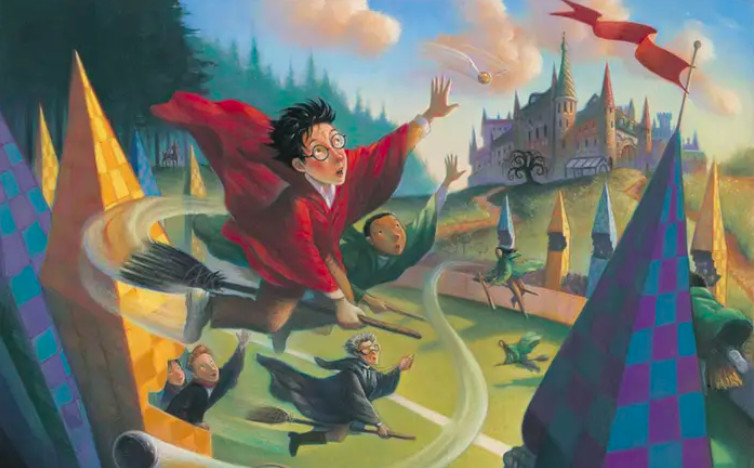
Think about the most iconic children's book characters that you've read. Names such as Matilda, Pippi Longstocking, Harry Potter, and The Cat in the Hat might jump to mind. How did their authors create such timeless characters?
Your protagonist is a few years older than your reader
Well, Jenny Bowman says that there's a golden rule for every children's book character. It goes a little something like this:
"Children always want to read stories about other children who are a little bit older than themselves, who are participating in life experiences that mirror their own."
So, for example:
- An 8-year-old protagonist (think Ramona Quimby) will attract a readership that's around 5-7 years old; and
- An 11-year-old protagonist (think Harry Potter) will appeal to readers from the age of 9.
This goes back to the importance of knowing your target market. Slightly older characters provide role models and exciting adventures that intrigue younger audiences — like how kids often look up to their older siblings. Of course, the experiences of these characters should not be so different that they lose their relatability: Ramona still appeals to 7-year-olds because being in third grade is pretty similar to being in second.
🎵
Tell us about your book, and we'll give you a writing playlist
It'll only take a minute!
Even kids characters need strengths and flaws
Next, don't think that writing a children's book gives you permission to create less-developed characters. A truly great children's book character will come with their own fully realized strengths, weaknesses, conflicts, and motivations that make them compelling to their readers. Children wantto connect to characters who they recognize. To help you get started creating memorable characters, we have three additional resources for you:
- A character profile template to help you fill out and understand your character.
- A list of character development exercises to test your knowledge of your characters.
- A free 10-day course on developing memorable characters, taught by a successful professional editor.
Bland is bad
We'll leave you with one last tip, which is to avoid making your characters so relatable that they're just bland. In the words of children's editor Brian Saliba: "Relatable doesn't have to mean identical. Challenge the status quo and subvert the default settings." It's also worth remembering to provide representation in all forms. If you'd like to learn more about diversity in children's book literature, go here.
5. Write a messy first draft, then rewrite it
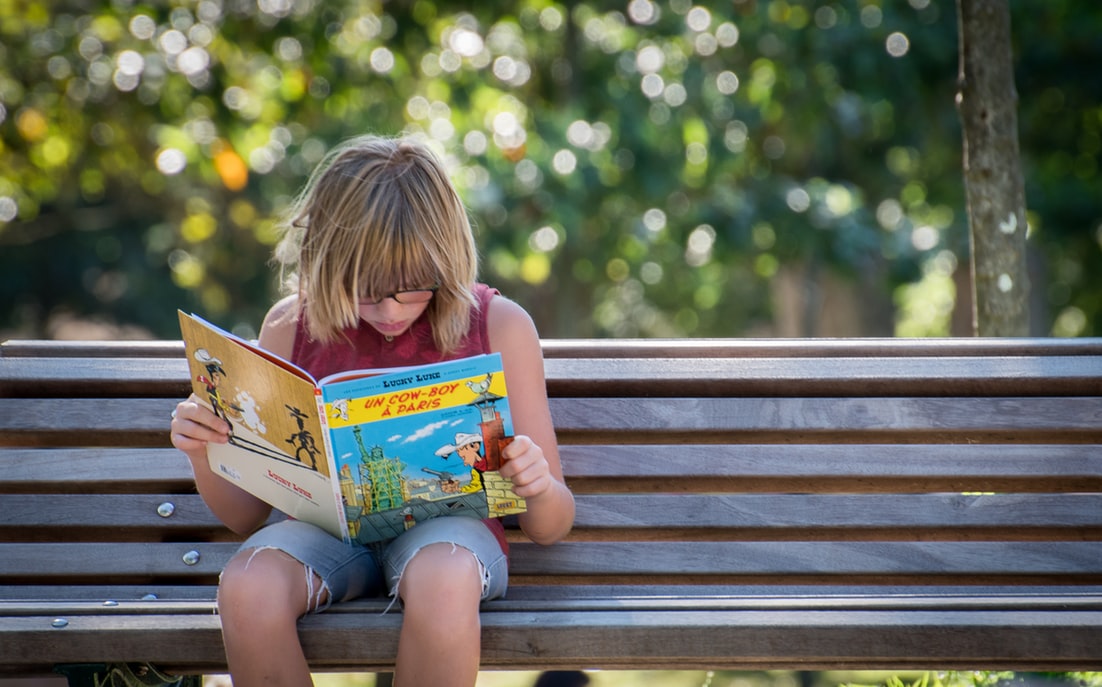
Now it's time to put it all together and get your story finally down on paper! Here are some tips to guide you as you write your children's book:
Don't be too precious about your first draft
There's a reason why people call first versions a 'rough draft' — one of the most paralyzing things for authors is the need to make a manuscript perfect from a get-go. Think of Michelangelo, chiseling statues out of marble: he didn't start by sculpting a life-like head, then an exquisitely rendered shoulder, and so on. The first stage would simply be to hack away most of the marble to create the vague shape of his design.
As a writer, you should think of your children's book as your very own "David" — the fun details, characterizations, jokes, and themes will come later. Your job at the start is just to draft a manuscript that vaguely resembles the book you have in your imagination.
Things to focus on in your rewrites
Once you've vomited up a shonky first draft, now is the time to crack out all your fine writing tools and finesse all the elements of your story. You'll rearrange, rewrite, or simply throw out a lot of your manuscript at this point — all in service of honing your story. Here are some things you may wish to focus on in your re-writes.
- Write about what you want, but make it relevant and appropriate. For instance, a child's book might want to explore the theme of betrayal, but the story would have to be a backstabbing best friend or sibling, not an unfaithful partner.
- Thoughtfully explore the theme(s) you've chosen. Your book will have at least one central theme/message, and probably more if it's a longer book for an older age group. Carefully intertwine these themes with the story; don't hit readers over the head with it.
- Entertain the adults too. This is a bonus tip, and certainly not one to prioritize over entertaining the kids. But if you can slip a pun or (appropriate!) cultural reference in for the adults who do all the book-buying and reading aloud, all the better.
- Read liberally in your genre. If you're struggling with your story, it may help to gather inspiration from the best children's books of all time.
💸
What will it cost you to hire a children's book illustrator?
Find out here! Takes 10 seconds.
Now, if you've managed to emerge from the sweat and tears with a manuscript you actually like, congratulations! Let's see what you might need to do with that first draft.
6. Edit, edit, and edit
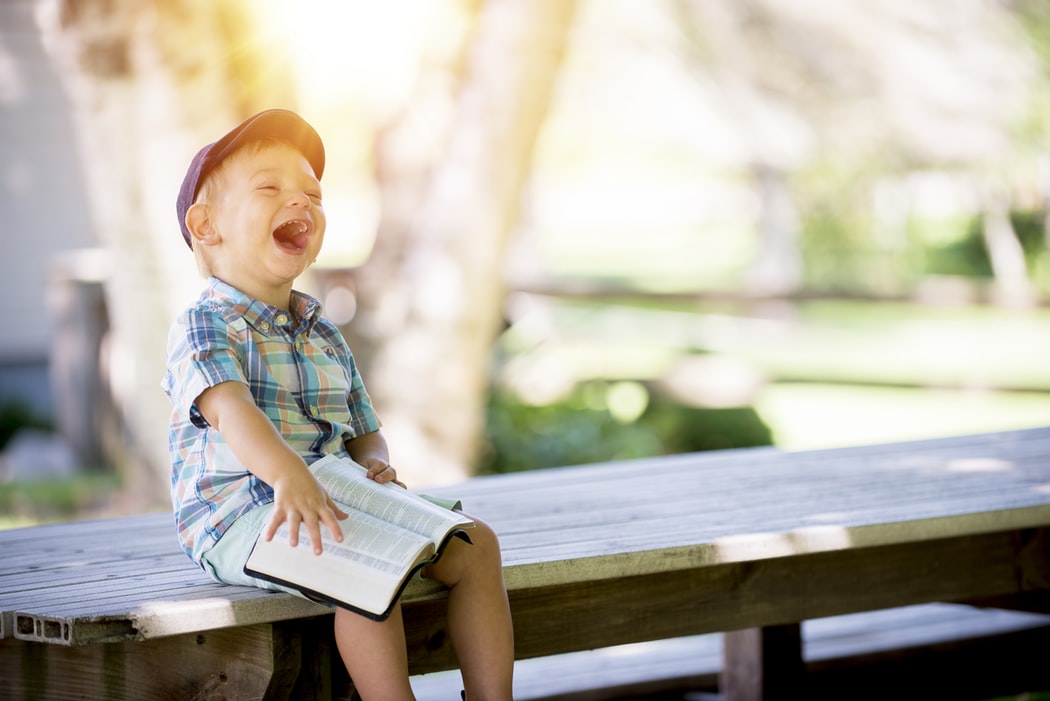
If your book is only 1,000 words (or less), why would you need to edit it? Answer: because you onlyhave 1,000 words, and every single one of them needs to count. Here are the most important things to know when editing a children's book.
Be brutal in your self-edit
The first thing you'll want to do is perform a self-edit on your children's book. That guide is actually perfect for middle grade and YA authors, who have more complex plots, characters, and themes. However, if you're editing a picture book or early reader book, you really only have to do one thing: cut it down to the bare essentials.
"But my book is so short! Do I really need to cut it down?" In short (no pun intended), yes. Your children's book may be short — but that's not the same as every detail being ESSENTIAL. Kids have short attention spans, and even one irrelevant detail can derail the story for them.
If you already have a short manuscript, the best way to do this kind of edit is to simply remove lines one by one. Each time, ask yourself: "Does the story still make sense without this line?" And if so, you can delete it.
To perfect your children's book, share it with friends, family, and children's writing communities (such as Children's Book Authors on Facebook or a writing group in your area). Make sure that actual children are included in your test readers, especially children of your target age group.
Kids are usually pretty honest, so their feedback will be the most valuable you receive. Incorporate their suggestions are much as possible, and then send out your book for more rounds of feedback! Only once you have thumbs-ups from all your young beta readers should you begin to think about publishing.
When in doubt, hire a pro
If you've gotten feedback, self-edited extensively, and still feel your children's book isn't quite there, consider hiring a professional children's editor. Their years of high-profile experience will both improve your storytelling and make sure that your book is ready for the market.
Fortunately, we have the best children's editors right here on Reedsy, many whom have worked with major authors like Daisy Meadows (author of the Rainbow Magic series) and R.L. Stine!
Free course: How to Write a YA Book that Sells
Learn how to write a commercially viable Young Adult novel with this free 10-day course. Get started now.
7. Publish your children's book
Once you're happy with your book, it's time to put it out there for kids to read and enjoy! You can dive deep into the process in this extensive guide to publishing a children's book. However, there's one topic I'm sure most of you are thinking about — something we'll cover right now.
Do you need an illustrator?
Though your language might be visual and you may very well be picturing the illustrations as you get your story down on paper, you shouldn't worry about finding a children's book illustrator when you're writing your book. Why? Well, if you're planning to go through a traditional publisher, you won't get the option of picking an illustrator yourself — your publisher will probably pick an illustrator for you.
If you're going to self-publish your children's book, that's a different story: you will need a professional illustrator at some point down the line. But that's a matter for the future: for now, you should concentrate on writing your book, and making sure that it's the best that it can be. When you come to that juncture in the future, come back here and check out this guide to children's book illustrators and how to hire them.
If you're planning to self-publish, you'll also want to start thinking about marketing. Here's a free 10-day course that provides marketing strategies to help you promote your children's book before, during, and after its launch. Also consider submitting your book to Reedsy Discovery, where thousands of indie readers can discover your work!
And no matter where you are in the process — just getting started, neck-deep in story development, or right on the brink of your launch — always remember why you're doing this in the first place. Writing a children's book might be an uphill climb, but it'll be more than worth it when you can finally get your book in the hands of young readers everywhere. ❤️
Got any more questions about how to write a children's book? Leave them in the comments below and we'll answer right away!
Steps To Writing A Children's Book
Source: https://blog.reedsy.com/how-to-write-a-childrens-book/
Posted by: morrisonwastoponcen.blogspot.com

0 Response to "Steps To Writing A Children's Book"
Post a Comment